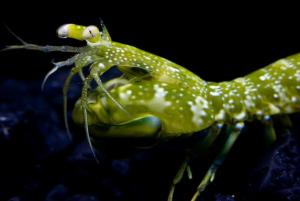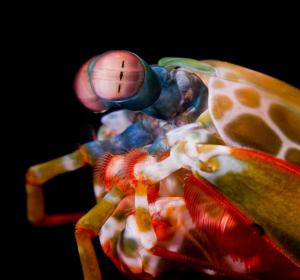Here, an illustration of what may be the largest flying bird
The largest flying bird
known to ever have lived has now been revealed, an extinct giant with a
wingspan more than twice the size of the largest living flying bird,
researchers say.
These findings exceed some predictions for the largest size possible for flying birds, scientists added.
The new species, Pelagornis sandersi,
had an estimated wingspan of 20 to 24 feet (6.1 to 7.3 meters) when its
feathers are included. This is up to more than twice as big as that of
the royal albatross, the largest living flying bird, which has a
wingspan of about 11.4 feet (3.5 meters).
"It's a really remarkable species,"study author Daniel Ksepka, a
paleontologist and curator of science at the Bruce Museum in Greenwich,
Connecticut, told Live Science. "It really pushes the limits of how big
we think flying birds can get. Getting a chance to add something like
this to the avian evolutionary tree is really exciting."
Until now, the biggest known flying bird was the extinct Argentavis magnificens, a condorlike titan from Argentina.
"It's disputed how large Argentavis' wingspan was — we only have one wing bone for it," Ksepka said. "We think the wingspan of Argentavis' skeleton was a bit under 4 meters (13.1 feet), while the skeletal wingspan of P. sandersi was about 5.2 meters (17 feet). Now both of their wingspans would be longer once feathers are taken into account, but P. sandersi would still probably be larger than Argentavis."
The fossil was first unearthed in 1983 near Charleston, South Carolina,
when construction workers began excavations for a new terminal at the
Charleston International Airport. It was named Pelagornis sandersi in honor of retired Charleston Museum curator Albert Sanders, who led the fossil's excavation.
Giant bird, giant dig
The specimen was so large that it had to be dug out with a backhoe.
"The upper wing bone alone was longer than my arm," Ksepka said in a
statement.
The specimen,
which consisted of multiple wing and leg bones and a complete skull, was
very well-preserved, a rarity because of the paper-thin nature of the
bones in these birds. Its beak possessed bizarre toothlike spikes that
lined the upper and lower jaws, revealing the bird was a previously
unknown species of pelagornithid, an extinct group of giant seabirds known for these "pseudo-teeth."
"These pseudo-teeth were not made with enamel like true teeth are, but
were projections of bone from the jaw," Ksepka said. "They are very
conical and pointed, which suggests they were used for piercing prey.
The most likely source of food for these birds were fish and squid near
the surface of the water."
This pelagornithid lived 25 million to 28 million years ago. "During
this time, global temperatures were substantially warmer than they are
today, and sea levels were higher, since there was less ice at the
poles," Ksepka said. "Charleston, where this fossil was found, is a
lovely city today, but back then it was completely underwater."
Pelagornithids lived all over the globe for tens of millions of years,
but vanished just 3 million years ago, and paleontologists remain
uncertain as to why.
"Pelagornithids were once found on every continent, including Antarctica," Ksepka said. "Pelagornithids were like creatures out of a fantasy novel — there is simply nothing like them around today."
The paper-thin hollow bones, stumpy legs and giant wings of P. sandersi hinted the bird flew. However, its size exceeded what some models suggest were the theoretical limits for flying birds.
Could P. sandersi fly?
To find out how P. sandersi could
take off and stay aloft despite its giant size, Ksepka fed data about
the bird's mass, wingspan and wing shape into a computer program
designed to predict flight performance. The researchers estimated the
bird weighed from 48.2 to 88.4 lbs. (21.9 to 40.1 kilograms).
The model suggested the bird was an incredibly efficient glider, whose
long, slender wings helped it stay aloft despite its enormous size. It
was probably too big to take off simply by flapping its wings and
launching itself into the air from a standstill — instead, like Argentavis, P. sandersi may have gotten off the ground by running downhill into a headwind or taking advantage of air gusts to get aloft, much like a hang glider.
"Pelagornis sandersi
could have traveled for extreme distances while crossing ocean waters
in search of prey," Ksepka said in a statement. "That's important in the
ocean, where food is patchy."
By riding on air currents that rise up from the ocean's surface, P. sandersi was able to soar over the ocean without flapping its wings. Once P. sandersi
reached adulthood, it may have been able "to live flying over the ocean
for most of the year, coming back to land only to nest, flying for
thousands of kilometers over the course of the year," Ksepka said. "It
probably landed on islands or remote areas where they could avoid
predators when they nested."
Unusually, "it's quite likely it had to molt all its flight feathers at
the same time," Ksepka said. Flight feathers need to get molted once
they no longer become flightworthy, and the bigger they get, the longer
they take to grow back. To deal with this problem, they may have done
what birds known as grebes do nowadays, and shed all their flight feathers simultaneously — "at the size they reached, it's very difficult to do anything else," Ksepka said.
Future research can analyze how these birds took off and landed, and
how maneuverable they were in the air, Ksepka said. He detailed his
findings online July 7th in the journal Proceedings of the
National Academy of Sciences.






 You
read that headline right. Researchers believe they have found the grave
of Vlad Tepes III, better known as Vlad the Impaler, aka the guy who
was probably a real vampire if there ever was one. And, of course, they
plan on popping that baby open.
You
read that headline right. Researchers believe they have found the grave
of Vlad Tepes III, better known as Vlad the Impaler, aka the guy who
was probably a real vampire if there ever was one. And, of course, they
plan on popping that baby open.
































